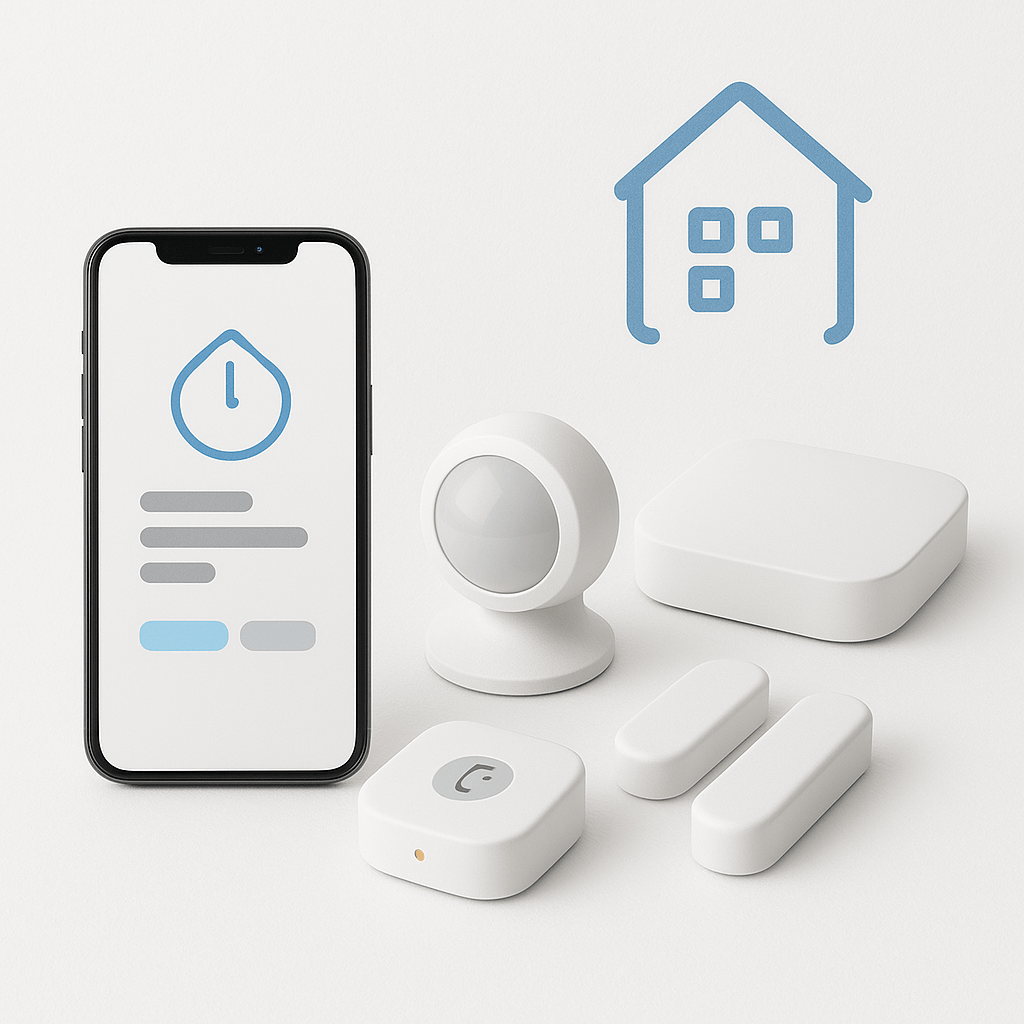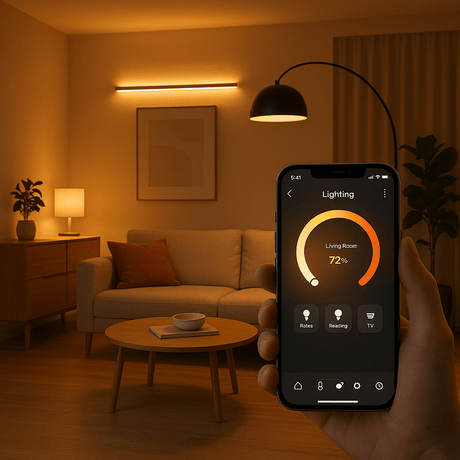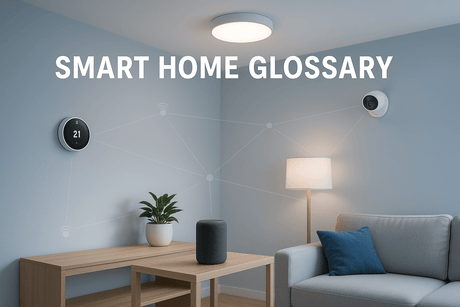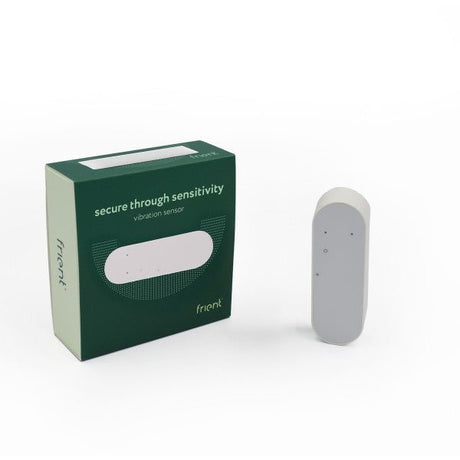Smart home sensors are the unsung heroes of home automation. They act as the eyes and ears of your system, detecting changes in the environment and triggering automated responses that enhance security, convenience, comfort, and energy efficiency. With a wide variety of sensor types available, choosing the right ones for your specific needs is crucial for building an effective and reliable smart home. This guide explores the most common types of smart home sensors, their applications, and the key factors to consider when making your selection.

Why Smart Home Sensors Matter
Sensors provide the contextual awareness that elevates a collection of smart devices into a truly intelligent home. Without them, automations are limited to schedules or manual commands. Sensors enable your home to react dynamically to real-world events, such as:
- Turning on lights when you enter a room.
- Adjusting the thermostat based on occupancy or temperature changes.
- Alerting you to potential security breaches like open doors or windows.
- Notifying you of environmental hazards like water leaks or smoke.
- Optimizing energy use based on real-time conditions.
Choosing the right sensors ensures your smart home responds accurately and reliably to the events that matter most to you.
Key Considerations When Choosing Any Sensor
Before diving into specific sensor types, consider these general factors that apply to most smart home sensors:
- Compatibility: Ensure the sensor uses a protocol (like Z-Wave or Zigbee) compatible with your smart home controller/hub. Check the controller's compatibility list.
- Power Source: Sensors can be battery-powered or mains-powered. Battery-powered sensors offer flexible placement but require battery changes. Mains-powered sensors are often needed for mesh network repeating (extending range) but require wiring.
- Range: Consider the distance between the sensor and the nearest hub or mesh-repeating device. Z-Wave and Zigbee create mesh networks, but placement still matters.
- Size and Aesthetics: Choose sensors that blend well with your home decor and fit the intended installation location.
- Environmental Resistance: For outdoor or potentially damp locations (bathrooms, basements), select sensors specifically rated for those conditions (IP rating).
- Configuration Options: Look for sensors that allow adjustments (e.g., sensitivity, reporting frequency) to fine-tune performance and battery life.
-
Integration: How well does the sensor integrate with your chosen smart home platform for creating automations?

Exploring Common Smart Sensor Types
Let's break down the most popular types of smart home sensors and what to look for in each category.
1. Motion Sensors
These sensors detect movement within a specific area, making them essential for security and automated lighting.
- How they work: Most use Passive Infrared (PIR) technology to detect changes in heat signatures. Some use microwave or ultrasonic technology.
- Common Applications: Triggering lights upon entry, activating security alarms or cameras, monitoring room occupancy for climate control.
-
Key Features to Look For:
- Detection Range & Angle: Match the sensor's coverage area to the room size.
- Sensitivity Adjustment: Allows tuning to avoid false triggers from pets or minor movements.
- Pet Immunity: Specific settings or designs to ignore animals below a certain size/weight.
- Light Level Sensing (Lux): Some motion sensors also detect ambient light, enabling automations like "turn on lights only if motion is detected AND it's dark."
- Response Time: How quickly the sensor reports motion.
- Choosing the Right One: Consider the room size, presence of pets, and whether you need integrated light sensing. For hallways, a wide-angle sensor might be best. For larger rooms, multiple sensors or ceiling-mounted options might be needed.
-
Explore Options: Find a variety of Motion Sensors compatible with different systems.
2. Door & Window Sensors (Contact Sensors)
These simple yet vital sensors detect when a door, window, drawer, or gate is opened or closed.
- How they work: Typically use a magnetic reed switch. A magnet is placed on the moving part (door/window) and the sensor on the frame. When the magnet moves away, the switch triggers.
- Common Applications: Security alerts for intrusions, triggering lights upon entry, ensuring doors/windows are closed before activating HVAC, automating closet lights.
-
Key Features to Look For:
- Size & Color: Choose options that blend discreetly with your frames.
- Gap Tolerance: The maximum distance the magnet can be from the sensor before triggering.
- Tamper Detection: Alerts if the sensor casing is opened.
- Additional Sensing: Some models include built-in temperature or vibration sensors.
- Choosing the Right One: Select based on aesthetics, required gap tolerance, and whether you need extra sensing capabilities. Recessed sensors offer a cleaner look but require drilling.
-
Explore Options: Browse different styles of Door & Window Sensors.
3. Temperature & Humidity Sensors
These sensors monitor ambient temperature and humidity levels, crucial for comfort and climate control automation.
- How they work: Use thermistors or semiconductor-based sensors for temperature and capacitive or resistive sensors for humidity.
- Common Applications: Triggering smart thermostats, controlling fans or dehumidifiers, monitoring conditions in sensitive areas (wine cellars, nurseries, server rooms), preventing mold growth.
-
Key Features to Look For:
- Accuracy & Range: Check the specified accuracy (+/- degrees/percent) and operating temperature/humidity range.
- Reporting Frequency: How often the sensor updates readings (may impact battery life).
- Display: Some models include a built-in screen for local readings.
- Size: Smaller sensors are easier to place discreetly.
- Choosing the Right One: Consider the required accuracy, whether you need a local display, and placement flexibility. For HVAC automation, placing sensors in multiple rooms provides better whole-home comfort.
-
Explore Options: View various Temperature & Humidity Sensors.
4. Water Leak Sensors
Essential for preventing costly water damage, these sensors detect the presence of water in unwanted places.
- How they work: Most have conductive probes that trigger an alert when bridged by water. Some use cables for wider area coverage.
- Common Applications: Placing near washing machines, dishwashers, water heaters, sinks, toilets, sump pumps, and in basements or attics prone to leaks.
-
Key Features to Look For:
- Probe Design: Point sensors detect leaks in a specific spot; cable sensors cover a larger perimeter.
- Audible Alarm: Many include a built-in siren in addition to smart home alerts.
- Battery Life: Critical for a device you set and forget.
- Temperature Sensing: Some also monitor for freezing temperatures that could burst pipes.
- Choosing the Right One: Select based on the area you need to monitor. Point sensors are good for under specific appliances, while cable sensors are better along basement walls or around water heaters. Consider models with built-in alarms for immediate local alerts.
-
Explore Options: Protect your home with Water Leak Sensors.
5. Energy Monitoring Sensors/Plugs
These devices measure the electricity consumption of individual appliances or entire circuits.
- How they work: Smart plugs measure power draw of the connected device. Clamp sensors attach to circuit breakers or main power lines for whole-home or circuit-level monitoring.
- Common Applications: Identifying energy-hungry appliances, tracking overall energy usage, triggering automations based on power consumption (e.g., notify when laundry is done), verifying if devices are on/off.
-
Key Features to Look For:
- Measurement Accuracy: How precise the energy readings are.
- Reporting Capabilities: Real-time power (W), cumulative energy (kWh), voltage (V), current (A).
- Maximum Load: Ensure the device can handle the amperage of the connected appliance (especially for plugs).
- Data Logging & History: How the data is stored and accessed.
- Choosing the Right One: Smart plugs are easy for individual appliances. Clamp monitors provide whole-home or circuit-level insights but require installation in your electrical panel (often needing an electrician). Consider what level of detail you need.
-
Explore Options: Manage and monitor usage with Energy Monitoring solutions.
6. Smoke & Carbon Monoxide (CO) Detectors
Smart versions of these life-saving devices integrate with your home automation system for enhanced safety.
- How they work: Use photoelectric or ionization sensors for smoke and electrochemical sensors for CO, similar to traditional detectors.
- Common Applications: Providing remote alerts via smartphone, triggering other smart home actions during an alarm (e.g., turn on lights, unlock doors, shut off HVAC), interconnecting alarms wirelessly.
-
Key Features to Look For:
- Sensor Type: Photoelectric is generally better for smoldering fires; ionization for flaming fires. Many smart detectors are photoelectric or dual-sensor.
- CO Detection: Choose combination smoke/CO detectors for comprehensive protection.
- Power Source: Battery, hardwired, or hardwired with battery backup.
- Interconnectivity: Ability to trigger all other connected alarms when one detects danger.
- Certifications: Ensure compliance with safety standards (e.g., UL listing).
- Choosing the Right One: Prioritize safety standards and reliable connectivity. Hardwired options with battery backup are often preferred for reliability. Check local regulations for placement requirements.
-
Explore Options: Enhance safety with connected Smoke & CO Detectors.
7. Air Quality Sensors
These sensors monitor various aspects of indoor air quality, contributing to a healthier living environment.
- How they work: Employ various sensor technologies to measure pollutants like Volatile Organic Compounds (VOCs), particulate matter (PM2.5), carbon dioxide (CO2), radon, etc.
- Common Applications: Triggering air purifiers or ventilation systems, alerting occupants to poor air quality conditions, monitoring for specific pollutants.
-
Key Features to Look For:
- Pollutants Measured: Choose based on your specific concerns (e.g., VOCs from new furniture, PM2.5 from cooking or outdoor pollution, CO2 for ventilation needs).
- Accuracy & Calibration: Check specifications and whether recalibration is needed.
- Display & Index: Many provide an Air Quality Index (AQI) score or color-coded indicator.
- Choosing the Right One: Identify your main air quality concerns. A sensor measuring VOCs and PM2.5 covers common indoor pollutants. If ventilation is a concern, CO2 monitoring is valuable.
-
Explore Options: Monitor your environment with Air Quality Sensors.
8. Sirens / Alarms
While not strictly sensors, smart sirens are often grouped with them as they act on sensor input to create audible or visual alerts.
- How they work: Receive commands from the smart home hub (triggered by sensors) to activate a loud siren and/or flashing light.
- Common Applications: Security system deterrent, audible alerts for water leaks or smoke detection in areas far from the primary detector.
-
Key Features to Look For:
- Volume (dB): Ensure it's loud enough for its intended purpose.
- Visual Alert: Flashing strobe light can add another layer of notification.
- Power Source: Battery backup is crucial for security applications.
- Configurable Sounds: Some offer different tones for different event types.
- Choosing the Right One: Consider placement (indoor/outdoor), required volume, and whether a visual alert is needed. Battery backup is highly recommended.
-
Explore Options: Add audible alerts with smart Sirens.
Building Your Sensor Network
Creating an effective sensor network involves more than just buying devices. Think strategically about placement and integration:
- Start with Priorities: Focus on sensors that address your primary goals first (e.g., security, leak detection).
- Layer Your Coverage: Use multiple sensor types for robust security (e.g., door sensors + motion sensors).
- Optimize Placement: Position sensors according to manufacturer guidelines for best performance and minimal false triggers.
- Consider the Mesh: For Z-Wave/Zigbee, ensure adequate coverage by placing mains-powered devices strategically to act as repeaters.
- Integrate and Automate: The true value comes from creating automations based on sensor input. Plan how sensors will trigger lights, alarms, thermostats, notifications, etc.
Conclusion: Sensors as the Foundation of Intelligence
Smart home sensors are fundamental to creating a home that is truly responsive, secure, and efficient. By carefully considering the types of sensors available, their specific features, and how they fit within your overall smart home goals and ecosystem, you can build a network of digital senses that provides invaluable awareness and enables powerful automation.
Focus on compatibility, reliability, and strategic placement. Start with the sensors that offer the most significant benefits for your needs, and gradually expand your network to create a smarter, safer, and more comfortable living environment. Remember to explore the specific sub-categories on Vesternet to find the full range of options available for each sensor type.



























